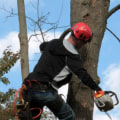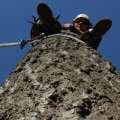The history of modern arboriculture is largely the history of the development of the ISA in the 20th century. And while such a story is not exclusively that of the ISA and its predecessor organizations, there is little importance in arboriculture that has not been reflected in its publications since its inception in 1924. As the Roaring Twenties began, the United States began to experience a boom in prosperity. Arborists began organizing associations to help educate the public about the need for scientific care of trees and to share their discoveries and innovations with each other. The National Shade Tree Conference (now known as the International Arboricultural Society) was organized and established in 1924 in F.
Arborist historians consider the 1970s a fundamental decade in the history of modern North American arboriculture. As part of the daily routine of tree care work, the early 1970s were practically status quo. You could say that arboriculture is a proud profession with 100 years of tradition without hindrance to progress. By the end of the decade, things would change significantly for better and for worse.
Arboriculture as a science studies how trees (and woody plants) grow and, in particular, how they respond to the environment and cultural practices. Just as I base my discussion on a single prediction, I think there was a driving belief that laid the foundation for the growth of arboriculture in the United States. During the 19th century, arboriculture became more common among the middle classes and their great enthusiasm for the practice resulted in the creation of conservatory orchards (collections of outdoor fruit trees), the creation of national inventories of cultivated varieties, and a profusion of literature on the subject. Some may argue that arboriculture began long before this, when trees were cleaned for telegraph lines.
I don't want to lose sight of the fact that the hard and physical parts of arboriculture won't go away. It was this meeting that would become the first of 75 annual conferences of the organization that has become the current International Arboricultural Society (ISA). He received substantial praise from many high-profile people of his day and became a leader in arboriculture. There are other considerations involved in arboriculture, including aesthetic considerations, legal issues, and risk management.
The role of the arborist or local government arboriculture officer is likely to have a big effect on these issues. Another big change in the next century will be the expansion of the global market for modern arboriculturists. Arboriculture, or the cultivation of fruit trees, is a sign of long-term attachment to a territory and is part of its organization. Often, for example, businesses need arboriculturists to visit their facilities to conduct a tree hazard study and to manage trees on site to meet health and safety requirements.
In 1917, Lem Stout, one of Bartlett Tree Experts' first iron men, was one of the first in recorded arboriculture history to tie himself to a tree with a manila rope for safety.






